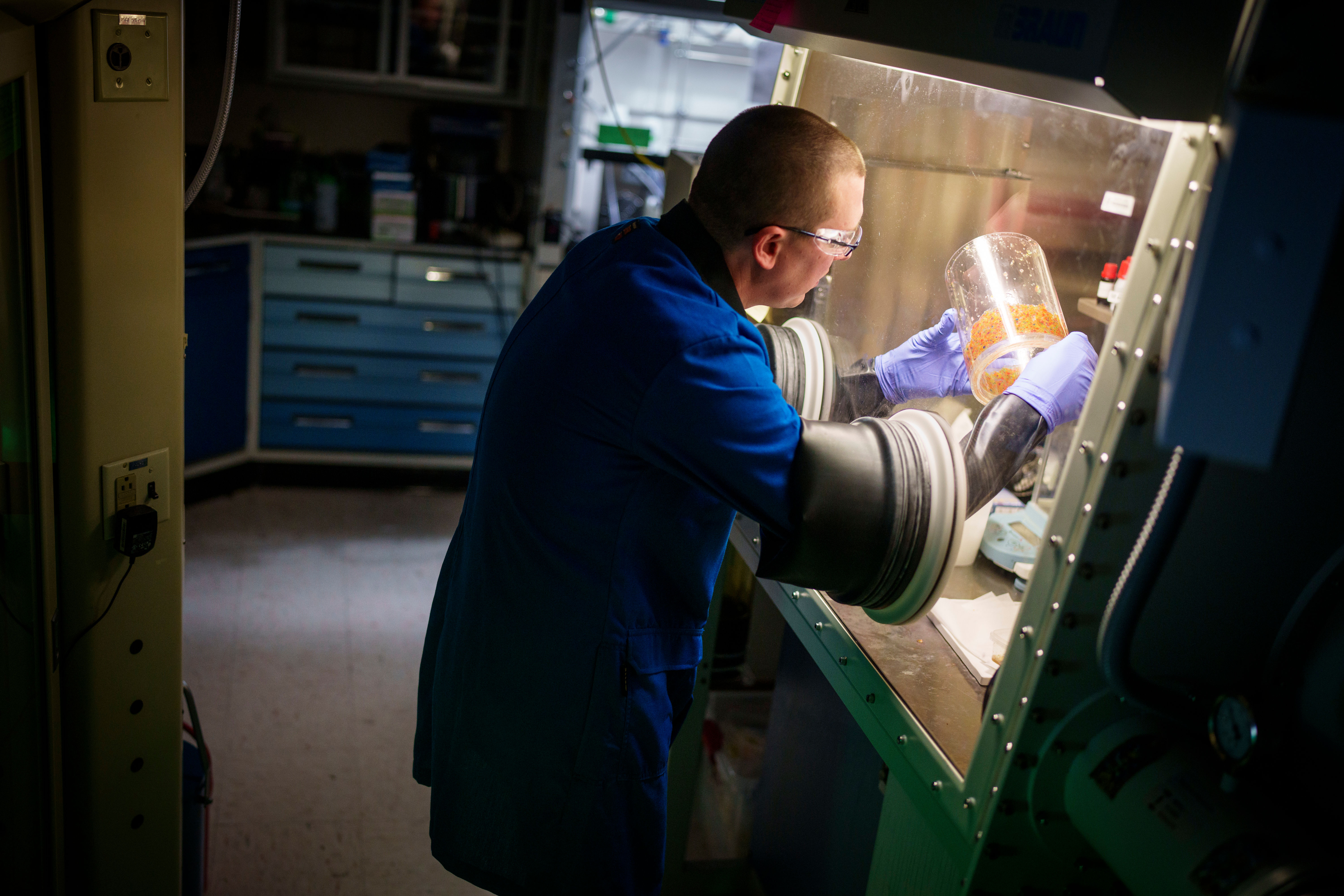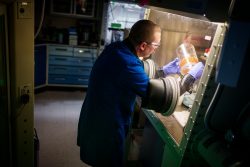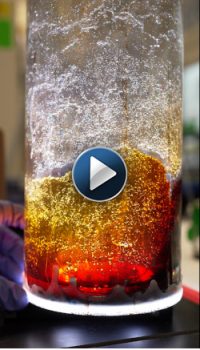
Every over-the-counter medication bottle sports a protective seal, usually a plastic wrap or foam layer, or both. These seals offer signs of tampering attempts. In a parallel concern, the International Atomic Energy Agency relies on tamper-indicating devices to make sure it knows if containers of nuclear material have been opened or tampered with.

Sandia National Laboratories materials chemist Cody Corbin works in a glove box, preparing a container filled with bead bits that will turn brown if someone attempts to tamper with the container's contents. (Photo by Craig Fritz) Click on the thumbnail for a high-resolution image.
However, just as a medication bottle might be opened and the tamper seals carefully reattached by a bad guy, the IAEA is concerned its devices could be bypassed and repaired or counterfeited. A possible solution? Engineers at Sandia National Laboratories have developed a groundbreaking prototype using "bruising" materials. Their innovation doesn't just detect tampering; the new device boldly displays the evidence, like battle scars.
"Our first idea was to create a 'bleeding' material where it was extremely obvious that it had been tampered with," said Heidi Smartt, a Sandia electrical engineer and project lead. "Then we made a new device using these materials where the damage is obvious for people to see. No one has ever done this sort of concept for international nuclear safeguards before."
Color-changing chemical

Click to watch an video of a bruised tamper-indicating container and a time-lapse video of a container being drilled into






